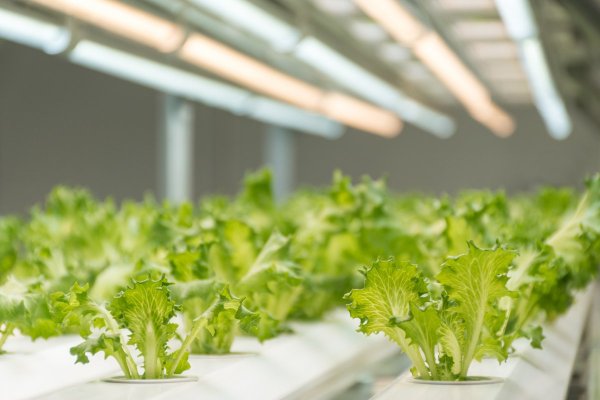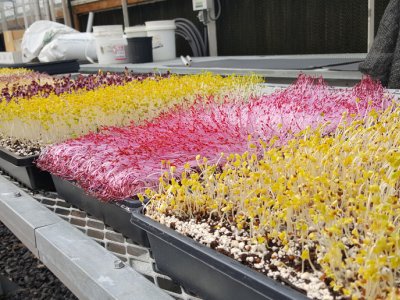According to the United Nations, there are approximately 13,400 nuclear weapons in our world today. In our unsettled geopolitical environment, there is always a threat, even if it’s low, that one or more nations could use nuclear weapons. If that occurred, millions of people would be injured or killed. However, the eye-opening statistic is that following a global nuclear conflict, billions of people could starve.
Nuclear winter is a period following nuclear weapon-caused firestorms when an abundance of soot in the Earth’s upper atmosphere blocks the sun’s rays, lowering the temperature and changing precipitation patterns. If enough nuclear weapons were detonated, a nuclear winter would be very likely and could last more than a decade. If that were to occur, the amount of food that could be grown using conventional outdoor agriculture, which provides most of the calories we eat, would greatly diminish, threatening worldwide starvation.
I am the principal investigator of a project titled “Food Resilience in the Face of Catastrophic Global Events.” Our research team comprises a group of nearly 30 interdisciplinary researchers investigating what could be done to feed the world if nuclear winter, or a similar cold, dark period caused by an asteroid strike or supervolcano eruption, were to occur. The project, funded by Open Philanthropy, is investigating what the food production, storage, and distribution responses to these effects might be, especially at the community and household levels.
One aim of the project is to serve as a nexus and a source of new insights into the question of post-catastrophic food resilience. Ultimately, the goal of the project is to come up with a clearer view of what the challenges would be in obtaining nutrition following a global catastrophe, and how feasible potential solutions to those challenges might be.
As a team, we ask questions such as: What would be the nutritional impacts on a typical family of an inability to get food via sun-based agriculture? How would people respond, or would they be able to respond at all to these kinds of catastrophes? What supplies and information would be required for a household to be prepared for an event like this? How many resources should be invested to prepare for events like this?
Over the past two years, the team has been studying the question of what the impacts of a global catastrophe would be on human nutrition. My part of the project deals with how we might be able to convert inedible plant biomass into food. What’s astounding is that if we add up all the inedible plant biomass (wood and straw and things like that) that exists in the world, it contains enough calories to feed the entire world’s current population for over a century. However, it would not provide a balanced diet or even likely produce enjoyable food, so additional approaches for providing nutrition would be required.

Other members of the team are focused on the potential to adapt food crops to different locations under the conditions that would exist post-catastrophe. For example, crops that are normally grown at high latitudes might be able to be moved to the tropics, which would potentially have temperatures above freezing, even during a nuclear winter. The team is looking at crops that are relatively cold-tolerant and shade-tolerant, like potatoes or winter wheat, which are often grown at a higher elevation or in colder climates. But one big question is whether those crops could be adapted to a tropical environment, which is going to have different day/night cycles, different soils, and all sorts of different agronomic characteristics than the places where those crops are normally grown.
Our team also has members working on whether we could domesticate foods that are edible and growing in the wild. Other researchers are studying whether we could expand indoor farming and grow things like microgreens and even aquatic plants like duckweed in low-temperature, low-light conditions.
We are also studying the ability of some of these plants to adapt to higher levels of ultraviolet (UV) light because, during a nuclear winter, the ozone layer would be depleted and therefore allow UV light to penetrate more extensively to the Earth’s surface. A nuclear winter could end up being a bad combination of being too dim while giving you a sunburn at the same time.
In addition to investigating the nutritional qualities of plants, we are also investigating whether mushrooms or other fungi could be grown on some of the dead plant biomass that would remain in large amounts, since many plants would die due to lack of sunlight and freezing temperatures.
The project includes researchers in food science who are helping to understand the nutritional content of all the emergency foods that the team is considering. The team is also developing what they call a “post-catastrophic MyPlate,” a nutrition guide to use with emergency foods. For example, post-catastrophic conditions would likely cause issues with vitamin D intake/production because of a lack of sunlight. What steps would need to be taken to ensure people are getting enough vitamin D?
Another part of the project deals with the social and economic implications of these catastrophic events and how people might respond to them. In terms of buying habits, what would a post-catastrophic economy look like? The team is trying to envision what that economy might resemble, especially at the household and community levels.
It's been interesting and enlightening to work on the project with people across different disciplines, ranging across plant biology, genomics, food science, economics, and international relations.
During our most recent symposium, the team ran a simulation that explored what would happen in a mid-sized city following a catastrophe. We examined questions such as what courses of action people would take, what decisions community leaders might make under these conditions, and how those decisions would influence overall survival and population levels. Simulations like this could help us understand what factors might affect food resilience and overall survival under these conditions.
If a global catastrophe strikes, the options for human nutrition would be severely limited and many people would likely suffer and starve, but some potential strategies for food resilience do exist. The hope is that this project will, first and foremost, provide information that will serve as a deterrent for people and governments considering nuclear conflict as a viable military option, and second, if humanity does face a catastrophe in the future, this work might help some people to survive under the dire conditions that might evolve. Hopefully, humanity will never face a global catastrophe, especially of our own making, but it often pays to be prepared for the worst while hoping for the best.
Charles Anderson is a cofunded faculty member of the Institutes of Energy and the Environment and an associate professor of biology. He studies plant cell wall dynamics with the goal of informing efforts to produce sustainable food, materials, and bioenergy from plants.
This blog post was created from a transcript of an interview of Anderson by Kevin Sliman, the communications manager for the Institutes of Energy and the Environment. Anderson and Sliman worked together to develop the blog post.






